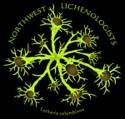Hi all,
I am hoping to get advice from the group about getting the best possible images of spores (e.g. from crustose lichens) and similar structures from my current microscopy setup. Although I have a decent compound scope, the limited depth of field is giving me headaches in terms of getting good spore or ascus images - I'd like to do better than the attached images which I took recently.
My current equipment: Olympus CX-31 scope with Plan C N objectives. Olympus TG-6 point-and-shoot camera, which I aim through the inserted ocular.
I have long used the TG-series Olympus cameras with my Leica dissecting scope and get reasonable images that way.
I do NOT see a DSLR in my future and a trinocular compound scope is years away, if ever in my budget.
My main question is: How can I best get Z-stacks (I assume that might be necessary) of spores or other tiny lichen structures with this setup? Anyone deal with this problem and have similar equipment? Or is it a lost cause? :)

